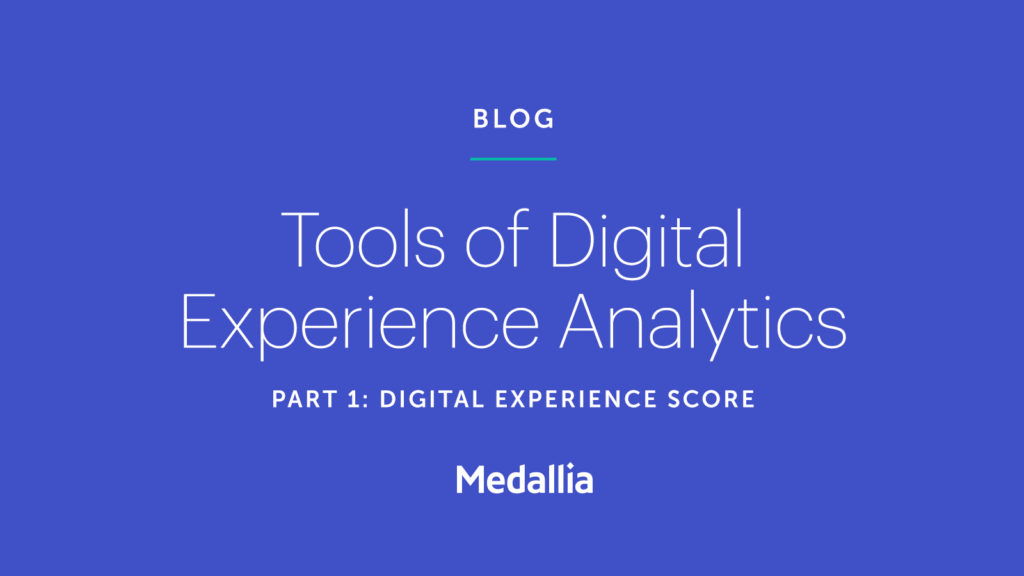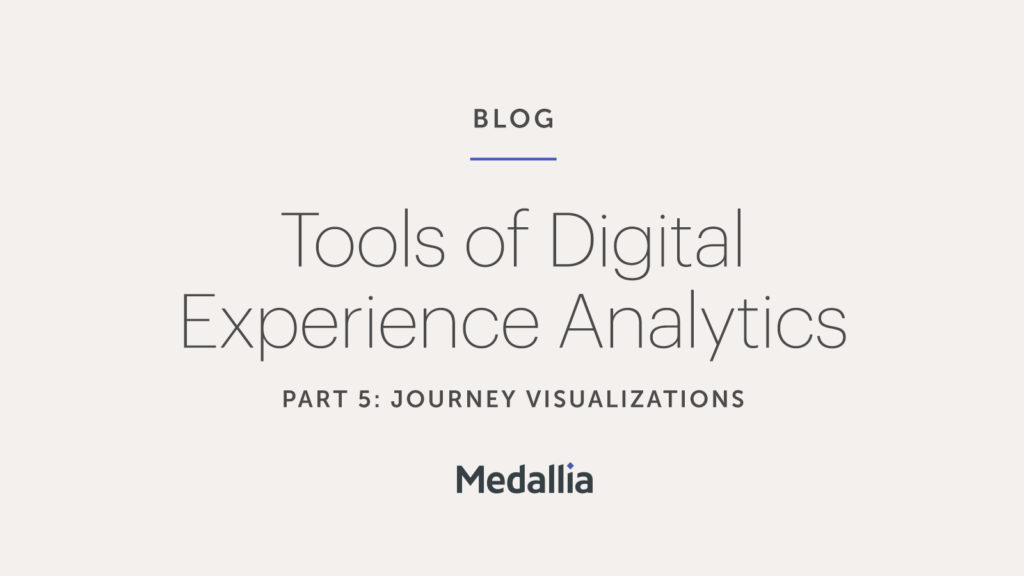Tracking millions of website and app experiences at scale every day is nearly impossible — unless you’re using a digital experience score. Find out what makes this metric essential in the digital-first era.
(EDITOR’S NOTE: Welcome to the first part of Medallia’s five-part blog series, Tools of Digital Experience Analytics. Each blog defines and explains the purpose behind a fundamental tool or feature of digital experience analytics. The series kicks off covering digital experience scores, while heatmaps, session replay, form analytics, and journey visualizations follow over the next several weeks.)
The digital-obsessed customer has made it clear that the digital experiences on websites and apps matter. In fact, web and app experiences matter so much that two in every three customers churn due to poor experiences, but conversion rates can jump up to 400% if you nail those experiences.
With the pressure to continuously improve their websites and apps, brands often face a common problem: accurately measuring digital experiences. While customer feedback, along with web and app metrics offer useful insights, they don’t directly measure digital experience. That’s why utilizing a digital experience score has become critical in the digital era.
What is a digital experience score?
A digital experience score is a metric that quantifies the online customer experience on websites and apps at scale. But how exactly does it work?
Sophisticated technology using machine learning and AI can automatically analyze every user journey, behavior, digital body language, and interactions on your website or app. It then prioritizes the most urgent experience issues causing user frustration or confusion, which ultimately sinks conversions and engagement. Finally, it scores the digital experiences of your website or app accordingly.
This type of metric has become a fixture in digital experience analytics solutions that help brands identify and optimize poor web and app experiences. However, scoring factors can differ by solution.
For example, the Digital Experience Score (DXS®), a part of Medallia Digital Suite, uses five pillars of digital experience: engagement, frustration, navigation, technical, and forms. Scoring scales may also vary, but DXS® measures the overall digital experience of a website or app on a scale of 0-10. A score of 10 reflects a seamless, friction-free experience, while lower scores reveal problematic experiences worth optimizing.

Why should you use a digital experience score?
There’s no such thing as a perfect metric, but a digital experience score gives you advantages other metrics simply can’t match. Most notably, it measures every single customer experience across your website or app without requiring direct feedback.
While metrics like CSAT, NPS®, CLV, and others alike should still hold a prominent place in your customer experience strategy, they don’t exclusively track digital experiences. They account for both online and offline customers, rely on customer responses, and can reflect customer biases. Meanwhile common conversion, engagement, and revenue-based metrics prove to be less reliable in this context because they’re more transactional.
Filling those voids, a digital experience score makes sense of insightful data that would otherwise go untracked. Depending on online traffic, that’s potentially millions of user sessions and billions of user behaviors boiled down into a single datapoint — with no surveys or direct engagements required. It reveals a customer’s true digital experience without any effort from the customer or your own team.
Digital experience scores have quickly become vital to businesses across industries. Although designed to measure digital experience, it can correspond to conversion and revenue results:
How should you use a digital experience score?
It’s not enough to have a digital experience score on hand, you’ll need to know how to use it too. And the beauty of using this type of metric comes from its ability to simplify benchmarking and guide optimization.
Before investing any resources into changes to your website or app, it’s best to benchmark your current digital experience score. To do this, simply record the digital experience score for your website or app as a whole, along with scores for the highest traffic pages and common journeys. This allows you to confidently determine the existing quality of web or app experiences without any guesswork. From here, these benchmarks can act as a baseline for digital experiences.
With digital experience score benchmarks set, you can investigate poor experiences reflected by the lowest scores on your website or app with tools like heatmaps and session replay. After pinpointing and optimizing specific issues derailing digital experiences comes the true test: Did your optimizations work? Compare the new digital experience scores to your benchmarks, and ultimately determine whether those efforts paid off or more work is required.
What matters most when choosing a digital experience score solution?
Not all digital experience scores are created equal. If you’re looking to roll out a digital experience score across your own website or app, here are a few key criteria to prioritize:
- Experience pillars: Learn how the digital experience score is calculated. Crucial areas of experience like engagement, frustration, navigation, forms, and technical aspects matter most.
- State of mind: Focus on a digital experience score that reveals the user’s state of mind. Based on certain behaviors, it will indicate whether a user is in an engaging, frustrating, or confusing experience.
- Behaviors: Be sure the digital experience score tracks more than just clicks. User behaviors include a long list of mouse movements and scrolling actions too.
- Digital experience metrics: Look beyond just a single digital experience score. Additional dashboard metrics like focus rates and times, download and loading times, page counts, and more all provide deeper digital experience insights.
- Validation: Favor a digital experience score that has a proven track record. Ensure the metric’s scoring rises or drops with levels of engagement, conversions, and revenue.
If you’re looking for a digital experience score that does all of the above and then some, download The Science Behind the Digital Experience Score (DXS®) for a detailed look at Medallia Digital Suite’s industry-leading metric.








